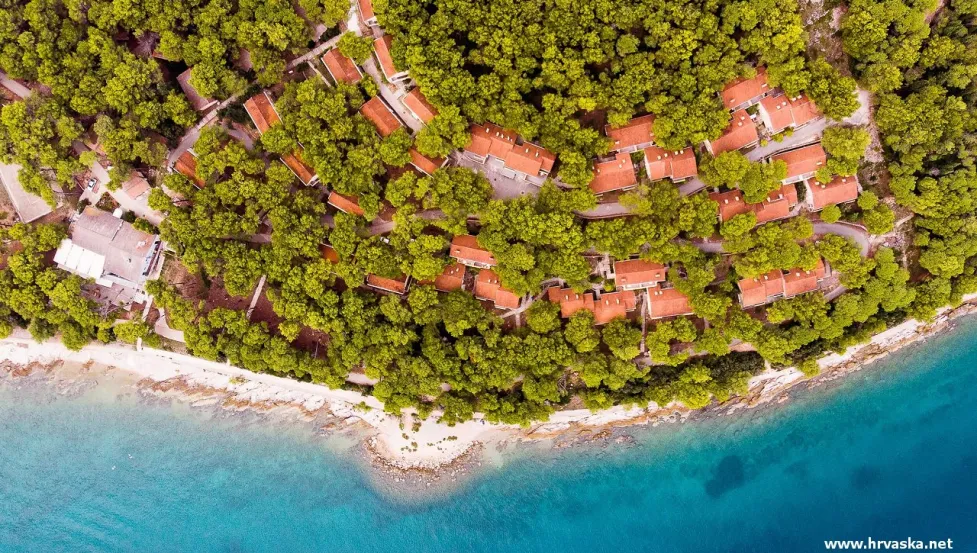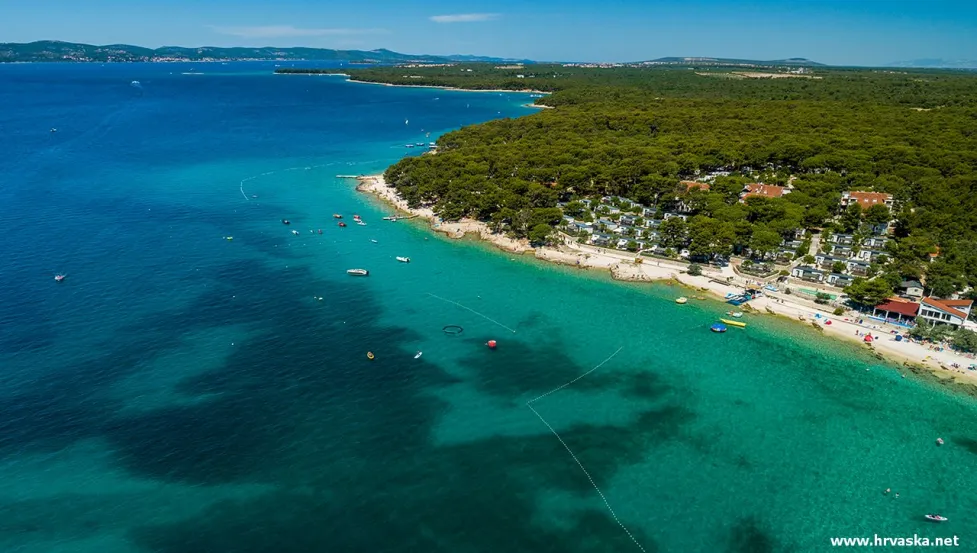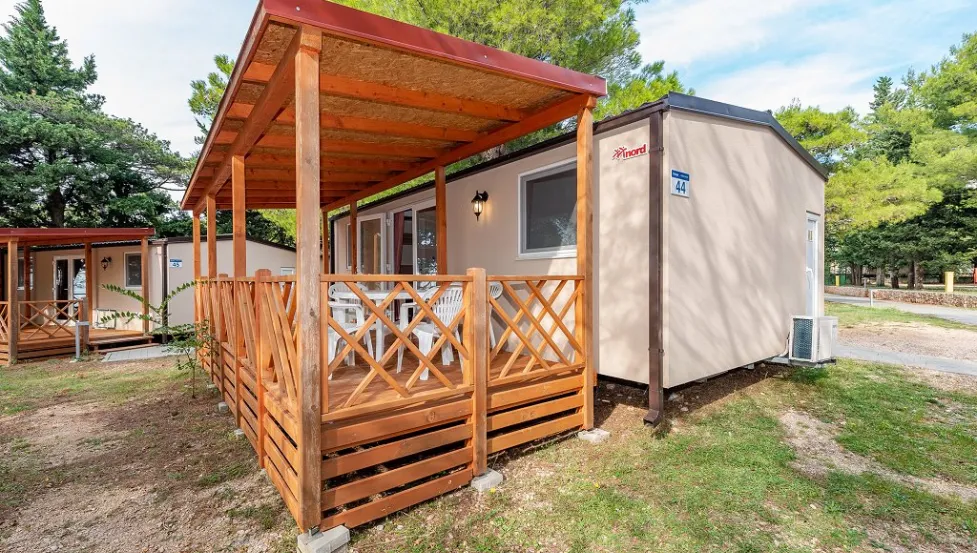Trogir
Trogir, historic town and harbour on the Adriatic coast, shipbuilding, Middle Dalmatia, Croatia
Trogir is a historic town and harbour on the Adriatic coast in Split-Dalmatia County, Croatia, with a population of 10,818 (2011) and a total municipality population of 13,260 (2011). The historic city of Trogir is situated on a small island between the Croatian mainland and the island of Čiovo. It lies 27 kilometres (17 miles) west of the city of Split.
Since 1997, the historic centre of Trogir has been included in the UNESCO list of World Heritage Sites.
HISTORY:
In the 3rd century BC, Tragurion was founded by Greek colonists[4] from the island of Vis, and it developed into a major port until the Roman period. The name comes from the Greek tragos (male goat). Similarly, the name of the neighbouring island of Bua comes from the Greek voua (herd of cattle). The sudden prosperity of Salona deprived Trogir of its importance. During the migration of Slavs the citizens of the destroyed Salona escaped to Trogir. From the 9th century on, Trogir paid tribute to Croatian rulers. The diocese of Trogir was established in the 11th century (abolished in 1828; it is now part of the Roman Catholic Archdiocese of Split-Makarska) and in 1107 it was chartered by the Hungarian-Croatian king Coloman, gaining thus its autonomy as a town.
In 1123 Trogir was conquered and almost completely demolished by the Saracens. However, Trogir recovered in a short period to experience powerful economic prosperity in the 12th and the 13th centuries. In 1242 King Béla IV found refuge there as he fled the Tatars. In the 13th and the 14th centuries, members of the Šubić family were most frequently elected dukes by the citizens of Trogir; Mladen III (1348), according to the inscription on the sepulchral slab in the Cathedral of Trogir called the shield of the Croats, was one of the most prominent Šubićs. In Dalmatian, the city was known as Tragur.
After the War of Chioggia between Genoa and Venice, on 14 March 1381 Chioggia concluded an alliance with Zadar and Trogir against Venice, and finally Chioggia became better protected by Venice in 1412, because Šibenik then became the seat of the main customs office and the seat of the salt consumers office with a monopoly on the salt trade in Chioggia and on the whole Adriatic Sea. In 1420 the period of a long-term Venetian rule began. In about 1650, a manuscript of the ancient Roman author Petronius' Satyricon' was discovered in Trogir containing the 'Cena Trimalchionis' ('Dinner of Trimalchio') the longest surviving portion of the Satyricon, a major discovery for Roman literature.[5]
On the fall of Venice in 1797, Trogir became a part of the Habsburg Empire which ruled over the city until 1918, with the exception of French occupation from 1806 to 1814. After World War I, Trogir, together with Croatia, became a part of the State of Slovenes, Croats and Serbs and subsequently, the Kingdom of Yugoslavia. During this period Italian citizens, who until 1918 were the ruling class and almost half of the population, were forced to leave for Italy. During World War II, Trogir was occupied by Italy and subsequently liberated in 1944. Since then it belonged to the second Yugoslavia, and from 1991 to Croatia.
MAIN SIGHTS:
Trogir has 2300 years of continuous urban tradition. Its culture was created under the influence of the ancient Greeks, and then the Romans, and Venetians. Trogir has a high concentration of palaces, churches, and towers, as well as a fortress on a small island, and in 1997 was inscribed in the UNESCO World Heritage List. The orthogonal street plan of this island settlement dates back to the Hellenistic period and it was embellished by successive rulers with many fine public and domestic buildings and fortifications. Its beautiful Romanesque churches are complemented by the outstanding Renaissance and Baroque buildings from the Venetian period, says the UNESCO report.
Trogir is the best-preserved Romanesque-Gothic complex not only in the Adriatic, but in all of Central Europe. Trogir's medieval core, surrounded by walls, comprises a preserved castle and tower and a series of dwellings and palaces from the Romanesque, Gothic, Renaissance and Baroque periods. Trogir's grandest building is the church of St. Lawrence, whose main west portal is a masterpiece by Radovan, and the most significant work of the Romanesque-Gothic style in Croatia.
The most important sites include:
- Historical city core, with about 10 churches and numerous buildings from 13th century
- The city gate (17th century) and city walls (15th century)
- The Fortress Kamerlengo (15th century)
- The Duke's Palace (13th century)
- The Cathedral (13th century) with the Portal of Master Radovan, the unique work of this Croatian artist
- The big and small palaces Cipiko from the 15th century
- The city loggia from 15th century
ECONOMY:
Tourism is the most important economic factor in the Trogir region, covering 50% of the municipal budget with more than 20,000 beds in hotels and private apartments. There is also a strong fishing and agriculture tradition among the population in surrounding areas.
The most important industry is shipbuilding, with shipyard Trogir established at the beginning of the 20th century. The shipyard has a capacity of two ships of 55,000 tons. Between 1990 and 2004, 93 ships were built in the shipyard.
Trogir lies six kilometers (4 miles) from Split Airport, and a regular bus connects Trogir with the airport and Split. In the future, the Split Suburban Railway will be lengthened towards the airport and Trogir.
Water supply to Trogir is sourced from the Jadro River, the source that once supplied the ancient Diocletian's Palace.
Trogir is a historic town and harbour on the Adriatic coast in Split-Dalmatia County, Croatia, with a population of 10,818 (2011) and a total municipality population of 13,260 (2011). The historic city of Trogir is situated on a small island between the Croatian mainland and the island of Čiovo. It lies 27 kilometres (17 miles) west of the city of Split.
Since 1997, the historic centre of Trogir has been included in the UNESCO list of World Heritage Sites.
HISTORY:
In the 3rd century BC, Tragurion was founded by Greek colonists[4] from the island of Vis, and it developed into a major port until the Roman period. The name comes from the Greek tragos (male goat). Similarly, the name of the neighbouring island of Bua comes from the Greek voua (herd of cattle). The sudden prosperity of Salona deprived Trogir of its importance. During the migration of Slavs the citizens of the destroyed Salona escaped to Trogir. From the 9th century on, Trogir paid tribute to Croatian rulers. The diocese of Trogir was established in the 11th century (abolished in 1828; it is now part of the Roman Catholic Archdiocese of Split-Makarska) and in 1107 it was chartered by the Hungarian-Croatian king Coloman, gaining thus its autonomy as a town.
In 1123 Trogir was conquered and almost completely demolished by the Saracens. However, Trogir recovered in a short period to experience powerful economic prosperity in the 12th and the 13th centuries. In 1242 King Béla IV found refuge there as he fled the Tatars. In the 13th and the 14th centuries, members of the Šubić family were most frequently elected dukes by the citizens of Trogir; Mladen III (1348), according to the inscription on the sepulchral slab in the Cathedral of Trogir called the shield of the Croats, was one of the most prominent Šubićs. In Dalmatian, the city was known as Tragur.
After the War of Chioggia between Genoa and Venice, on 14 March 1381 Chioggia concluded an alliance with Zadar and Trogir against Venice, and finally Chioggia became better protected by Venice in 1412, because Šibenik then became the seat of the main customs office and the seat of the salt consumers office with a monopoly on the salt trade in Chioggia and on the whole Adriatic Sea. In 1420 the period of a long-term Venetian rule began. In about 1650, a manuscript of the ancient Roman author Petronius' Satyricon' was discovered in Trogir containing the 'Cena Trimalchionis' ('Dinner of Trimalchio') the longest surviving portion of the Satyricon, a major discovery for Roman literature.[5]
On the fall of Venice in 1797, Trogir became a part of the Habsburg Empire which ruled over the city until 1918, with the exception of French occupation from 1806 to 1814. After World War I, Trogir, together with Croatia, became a part of the State of Slovenes, Croats and Serbs and subsequently, the Kingdom of Yugoslavia. During this period Italian citizens, who until 1918 were the ruling class and almost half of the population, were forced to leave for Italy. During World War II, Trogir was occupied by Italy and subsequently liberated in 1944. Since then it belonged to the second Yugoslavia, and from 1991 to Croatia.
MAIN SIGHTS:
Trogir has 2300 years of continuous urban tradition. Its culture was created under the influence of the ancient Greeks, and then the Romans, and Venetians. Trogir has a high concentration of palaces, churches, and towers, as well as a fortress on a small island, and in 1997 was inscribed in the UNESCO World Heritage List. The orthogonal street plan of this island settlement dates back to the Hellenistic period and it was embellished by successive rulers with many fine public and domestic buildings and fortifications. Its beautiful Romanesque churches are complemented by the outstanding Renaissance and Baroque buildings from the Venetian period, says the UNESCO report.
Trogir is the best-preserved Romanesque-Gothic complex not only in the Adriatic, but in all of Central Europe. Trogir's medieval core, surrounded by walls, comprises a preserved castle and tower and a series of dwellings and palaces from the Romanesque, Gothic, Renaissance and Baroque periods. Trogir's grandest building is the church of St. Lawrence, whose main west portal is a masterpiece by Radovan, and the most significant work of the Romanesque-Gothic style in Croatia.
The most important sites include:
- Historical city core, with about 10 churches and numerous buildings from 13th century
- The city gate (17th century) and city walls (15th century)
- The Fortress Kamerlengo (15th century)
- The Duke's Palace (13th century)
- The Cathedral (13th century) with the Portal of Master Radovan, the unique work of this Croatian artist
- The big and small palaces Cipiko from the 15th century
- The city loggia from 15th century
ECONOMY:
Tourism is the most important economic factor in the Trogir region, covering 50% of the municipal budget with more than 20,000 beds in hotels and private apartments. There is also a strong fishing and agriculture tradition among the population in surrounding areas.
The most important industry is shipbuilding, with shipyard Trogir established at the beginning of the 20th century. The shipyard has a capacity of two ships of 55,000 tons. Between 1990 and 2004, 93 ships were built in the shipyard.
Trogir lies six kilometers (4 miles) from Split Airport, and a regular bus connects Trogir with the airport and Split. In the future, the Split Suburban Railway will be lengthened towards the airport and Trogir.
Water supply to Trogir is sourced from the Jadro River, the source that once supplied the ancient Diocletian's Palace.





